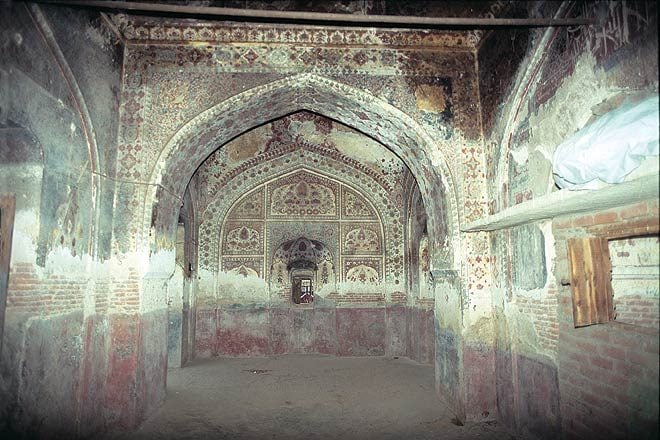Push has come to shove by the time I board the Kalanaur-bound bus in Batala. It is
Where’s Kalanaur, why am I going there and must I bother you about it? The first two answers are easy but few, if any, will buy the third. Let me try. I am going to Kalanaur because that’s where the only other ‘great’ king in Indian history—apart from Ashoka—started his career. For me, it’s an act of faith.
The untimely demise of Humayun on January 19, 1556 had put a question mark on the Mughal Empire in India for the second time in 16 years. Sher Shah Sur had packed Humayun off on a 15-year exile in 1540 AD. And then, within seven months of his hard-fought return, his death had presented an opportunity to still-strong enemies.
The emperor’s 13-year-old son Jalaluddin Muhammad Akbar was away in Kalanaur at the time with his mentor Bairam Khan, crushing a rebellion. The instability in Delhi demanded his return. But before that, it was necessary to proclaim him emperor. Which is what Bairam Khan did in Kalanaur on February 14, 1556.

Now for the second question, I am going to Kalanaur because Takht-i-Akbari, a masonry platform on which Akbar was crowned, exists to this day. As for the town’s location, it lies just a few kilometres short of the border with Pakistan, on the road from Amritsar to Pathankot.
An hour later, I am in Kalanaur. It’s taken that long because the bus stops at every village. And now that I’m here, I’m not sure whether it deserves to be called a town at all. True, there’s a dense cluster of houses on the right but most villages in my native UP are more populous than this.
The townsfolk (ok, it’s a town) are at least aware of their precious heritage and are quick to guide me down the road. After about 10 minutes, I find a board on a post pointing the way to the Takht. I can’t see it, for it’s a couple of kilometres deep amidst the wheat fields.
I walk as fast as I can, not only because the days are short but also because there’s no bus after 6pm. It’s one long stretch of country road and there’s no transport to be had. Plain bad luck because every scooter that drives past me has a pillion rider.
And then I see it, the masonry platform glowing yellow in the light of the winter sun. If it were not for a few farmers in the fields, I would make a dash for it but I make every step three-feet-long nonetheless.

It’s with mixed feelings that I climb up the steps to the plastered ‘throne’. The entire platform is tidy, nicely maintained by the Archaeological Survey of India. The green fields all around are pretty. And yet, there is an indescribable sadness in the air.
Here sat the greatest king the country’s seen in the last 1,000 years… Correction, here sat Akbar to be crowned emperor, the greatest India has seen in the last 1,000 years. Yet, today, a part of his vast domain lies across the border, just 5km away as the crow flies.
Maybe that sadness springs from the throne’s isolation. It’s not an Agra Fort or Fatehpur Sikri. It’s seldom talked about and never visited. Besides, it has none of the others’ splendour. No doubt, it has its design flourishes and engineering feats but none that is spectacular.
The highlight of this simple platform is its cooling system. A small tank in the middle overflowed with water, which spread across the surface and then drained out of pipes at each end. Simple and, I presume, effective. Why they needed a cooling system in February is beyond my comprehension.
Walking back towards the bus stand, I spend a few minutes at an old mosque by the road. It must have been beautiful once but has fallen into disrepair. Who built it and when, I don’t know. There’s no board around, from which I gather it is not a protected monument. But the beautifully painted walls inside, to my mind, present a strong case for conservation.
Across the road, loudspeakers—one at the gurudwara of Banda Bahadur and the other at the Kaleshwar Mahadev Temple—have come alive. Both claim to be old but don’t wear their prosperity lightly. There’s too much paint and marble in evidence to interest a student of history.
While killing time at the bus stand, I remember the name Kalanaur is said to be a corruption of Kaleshwar. Patron god? I cast one hopeful glance in his direction and the last bus to Batala arrives in a cloud of dust.
Kalanaur
Takht i Akbari
Leave a Reply
You must be logged in to post a comment.


